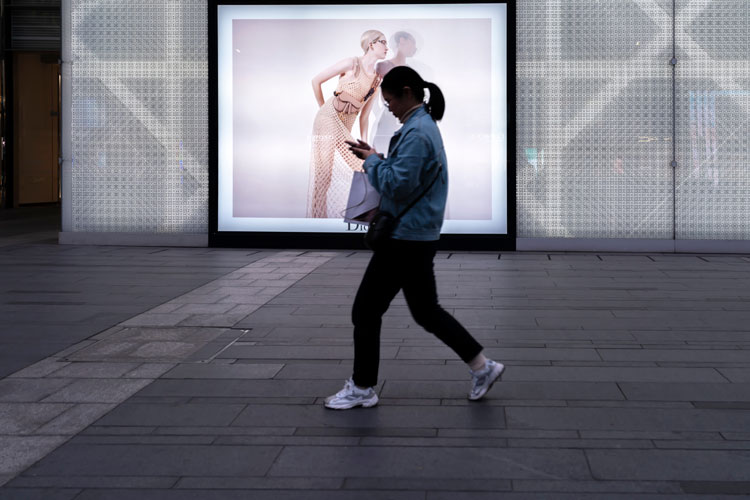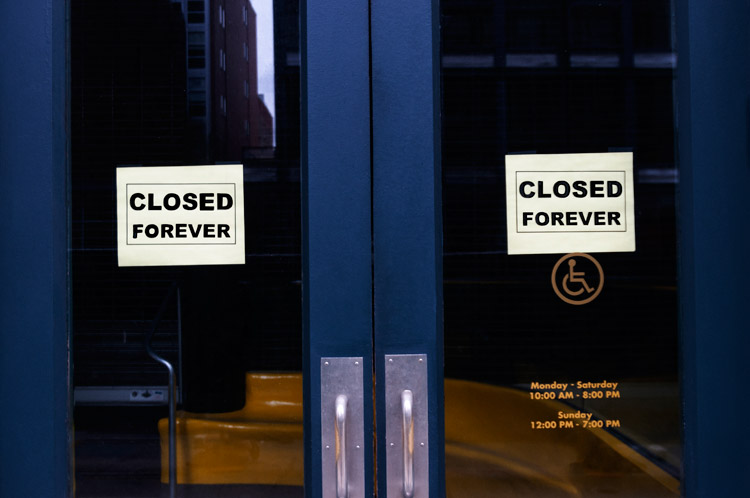 0
0 
If you expect me to tell you what the future holds, prepare yourself to be disappointed. Sorry, no crystal ball here. However, I do recommend you read “The State of Fashion”, a study published annually by The Business of Fashion in collaboration with McKinsey & Company. While I don’t know if it’s an accurate prediction of the future, it certainly explains quite well where the fashion industry wants to go.
What they know
According to “The State of Fashion” this year, “fashion companies will post approximately a 90 percent decline in economic profit in 2020, after a 4 percent rise in 2019”.
What to look for in 2021
There are 10 themes that factor into calculating the agenda for fashion in 2021, according to The Business of Fashion study:
1. Living with the Virus
2. Diminished Demand
3. Digital Sprint
4. Seeking Justice
5. Travel Interrupted
6. Less Is More
7. Opportunistic Investment
8. Deeper Partnerships
9. Retail ROI
10. Work Revolution
How to succeed in 2021
Although 2021 will be a hard year for most fashion enterprises, Business-of-Fashion-identified players will most likely benefit from it as “a brighter future lies ahead for companies that are heavily indexed in digital channels and the Asia-Pacific region.”
Why am I worried for fashion?
Let me clarify our position here at TSC. We are fashion lovers, bargain connoisseurs, and conscious consumers. We hate waste and we are painfully aware of the predicament most workers in the fashion retail value chain find themselves in. Having said that, we worry when Business of Fashion concludes that “a brighter future lies ahead for companies that are heavily indexed in digital channels and the Asia-Pacific region.” It looks like fashion’s survival depends exclusively on its success to partner with China’s e-commerce platforms. I think everyone knows that it is mandatory in 2021 to have an online presence. The question remains: how many companies can afford the marketing costs associated with having one? As far as the gold rush to China goes, if I were a fashion company I would stop and ask myself the following questions:
1. Do I really trust the Chinese government?
Large fashion companies put all their efforts right now into getting a slice of the “largest luxury market”. Louis Vuitton picked Wuhan in China for its first global exhibition according to South China Morning Post as “a sign of confidence in [the] world’s biggest luxury market”.
Some say it was a sound economic decision; others say it was just a necessary move to appease the Chinese government. Either way, it is a signal that they have enough trust in the system. But have these companies not heard of the predicament Jack Ma is in after criticizing the Chinese Communist Party government? Have they not heard about Covid 19 and the successful Chinese state controlled media efforts to quash any negative information and rewrite the narrative?
2. Am I honest in what I stand for?
Nike got very political in an ad declaring, “Believe in something, even if it means sacrificing everything.” However, Nike is—according to the New York Times—”among the major companies lobbying Congress to weaken a bill that would ban imported goods made with forced labour in China’s Xinjiang region.” So, Nike, I ask you: did you lie in your ad or do you stand for Chinese forced labor?
So what does this all mean?
The future is unclear, and I am having a hard time reconciling what Business of Fashion thinks will set the fashion industry agenda in 2021 with what they think will make a fashion company successful. I do hope this is not a requiem after all, and that fashion will find a way to survive this as well—maybe despite industry’s effort and not because of it.
Image credit: B.Zhou via Shutterstock, Svetlana Lukienko via Shutterstock
Posted by Mirela Gluck at 07:27 AM
A FASHION , Fashion News |
 1
1 
Of all the things you wake up worrying about, I am sure that the imminent death of the fashion industry is not even among the first ten. And yet, we as avid consumers of fashion are at least partially responsible for its death. We do have some blood—er, buttons—on our hands. We owe it to this fallen comrade (now plunging like its beloved necklines) to at least take the time to understand what happened.
There are some who blame the pandemic for fashion’s demise, but in all honesty, the industry has been acting like an insecure teenager for years. It has been pushed over the edge by nefarious, self-serving bullies long before we got hit by the pandemic. Who are the culprits?
1. Fashion Education
The Business of Fashion asks the pertinent question, “Is fashion education selling a false dream?” It seems that a combination of Project Runway success and the democratization brought by social media has resulted in an enormous growth of demand for fashion education. As Sara Kozlowsky, Director of Education and Professional Development at the CFDA, says “In some cases institutions have experienced enrollment increases tripling student populations.” The result? There are thousands and thousands of designers that leave the schools every year and never find a job or are “unhappy with only making what sells” as one graduate says. Schools teach designers to be head designers and disruptors, but in reality most end up creating only safe, pragmatic stuff that sells. And that’s the best case scenario.
2. Designers who are recycling old ideas
That’s not quite an original idea of my own. I am referencing Li Edelkoort here, a Dutch trend forecaster and absolutely fascinating lady, who doesn’t seem afraid to serve uncomfortable truths to the industry she loves. According to her, “newness is a thing of the past,” and most designers are “simply making more and more ‘garments’ to finally conclude ‘With this lack of conceptual innovation, the world is losing the idea of fashion.’” There is a long explanation as to why designers—pushed by unreasonable deadlines—have given up on being creative and went on to just “create garments” but I am leaving that for another article.
3. The industry that let marketing take control of the creative process
According to Ms Edelkoort, “It is, without doubt, the perversion of marketing that ultimately has helped kill the fashion industries. Initially invented to be a science, blending forecasting talent with market results to anchor strategies for the future, it has gradually become a network of fearful guardians of brands, slaves to financial institutions and hostages of shareholder interests, a group that long ago lost the autonomy to direct change.” She continues, “Marketing has taken over power within the major companies and is manipulating creation, production,
presentation and sales.” Why did the industry put the cart before the horse? I would venture to say that an industry that should be driven by creativity has become strictly a money making machine… with little to no interest in creativity whatsoever.
4. And… Anna Wintour
Yes, you read that right. I blame the soulless fashion queen for the demise of fashion. Some love her and describe “her genius,” which according to designer Marc Jacobs, is “picking people very astutely, whether in politics, movies, sports, or fashion.” Some stopped liking her, like André Leon Talley who says she inflicted “huge emotional scarring” on many. I am with Talley here, because I do believe him when he says that she “was never really passionate about clothes”, and that she cared only about power (her own!). In her 30 year reign of Vogue, she single-handedly decided what we should wear and how. She handpicked and promoted designers that defined a decade of fashion: Alexander Wang, Derek Lam, Zac Posen, and Proenza Schouler. An ultimate dealmaker, she used her influence to exercise her power. When Michael Kors went bankrupt in the 90s, she waved her magic wand and found investors. She is credited for creating the Fashion Night Out and the Met Gala.
Do you know what all these accomplishments have in common? Proenza Schouler has gone from one investor to another and ended up with a firm that specializes in distressed investments. Last year, Derek Lam shut down his high-end line and Zac Posen went out of business. Fashion Night Out was cancelled and so was the Met Gala. It seems Ms. Wintour can do no wrong though as of this past December she got yet another promotion, shortly after acknowledging “hurtful mistakes” and for the treatment of Black talent at Vogue. I guess we wouldn’t be having this “conversation” if the industry was half as resilient as Ms Wintour.
Image credit: Debby Wong via Shutterstock, 80’s Child via Shutterstock
Posted by Mirela Gluck at 06:12 AM
A FASHION , Fashion News |
 0
0 
The end of year is a time to look back and celebrate, right? Unfortunately, that is not the case with the end of this year, especially for the NYC retail and fashion industry. At the very least, those of us entrenched in the fashion world could celebrate this year being over, but there is no point even in that when 2021 is looking no more promising.
According to McKinsey Fashion Index, “companies will post approximately a 90% decline in economic profit in 2020”. In the meantime, small business and retail chains are closing their doors in NYC at much higher rates than anywhere else in the US. With both tourists and office workers gone, foot traffic in Manhattan is comparable to that in other cities where rent per square foot is much lower, which makes leaving NYC an easy choice for brands.
While the fashion industry pundits hail this upcoming year as a time for renewal and a time of progress during which “shopping will shift to digital, and consumers will continue to champion fairness and social justice,” the truth is it is a time for consolidation that will eliminate most small players and will concentrate purchasing power into the hands of few large ones like Amazon and Alibaba.
Where does this leave us and our love of sample sales?
Brands are putting focus (again) on the shift to a demand-focused model to survive these uncertain times. I have a suspicion that it is easier said than done, as we were talking about this same idea when I was in business school in the late 90s. Why is this relevant for us? While lovingly called “sample sales,” we all know that most of the merchandise at NYC sample sales come from excess inventory. As we doubt fashion brands will be able to quickly adapt to the new times and the supply-demand model, we think warehouses will continue to be full of unsold inventories in the near future. Especially after a decade of bargain shopping, a pandemic fueled all-time low consumer sentiment and the addition of an anti-consumerism ideology, we doubt that sample sales will go away any time soon.
In fact, our own sample sale whisperer, Ritu Bindra (a miracle woman), has seen an approximate 50% return to date of last year’s sample sale events. She told us that, “sample sales have returned, but mostly with the sale organizers. Most designers and brands are no longer holding sales themselves at their showrooms or stores.” The first to return was 260, followed much later by Soiffer Haskin, Clothingline, and Prive. Some brands such as Diptyque, TOCCA, and Bonpoint have opted this year for online sample sales at 260, which has become increasingly popular with socially distanced “bargain connoisseurs”.
So, will there be any NYC sample sales in 2021? Yes, but there is also the possibility that Miami and LA sample sales will become stronger competitors to the NYC ones as travel will take another 3-4 years to return to the 2019 levels. We think big players (like 260 and Soiffer Haskin) who are backed up by large (non-retail) companies will have a much better chance of surviving, leading to a reduced number of players in the field. We also predict that people will become increasingly used to online sample sales and will start comparing them to websites like RueLaLa and Gilt.
Only time will tell. But we’ve got our fingers crossed and rooting for our beloved sample sales, now and forever. Bring on 2021!
Posted by Mirela Gluck at 07:00 AM
Shopping News |
